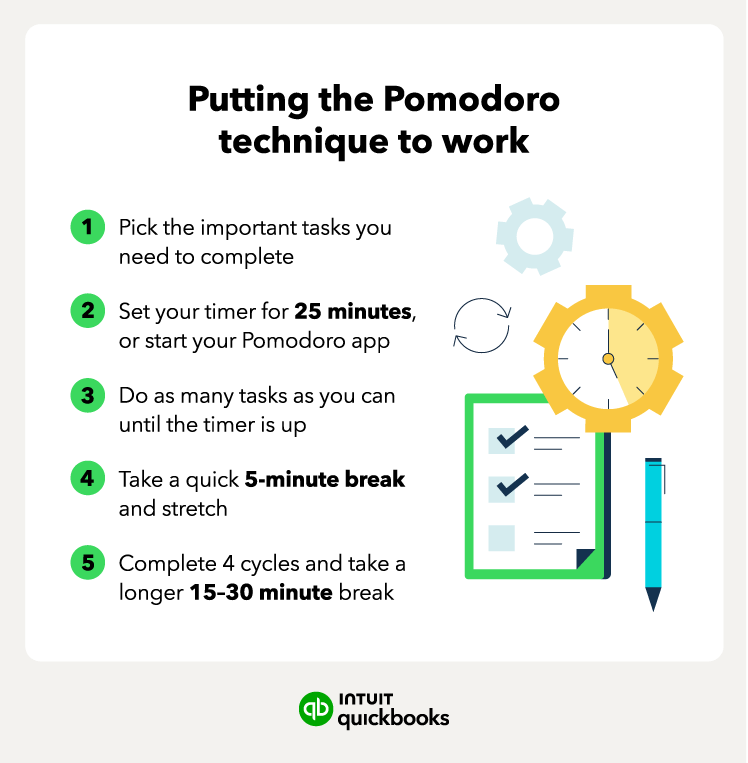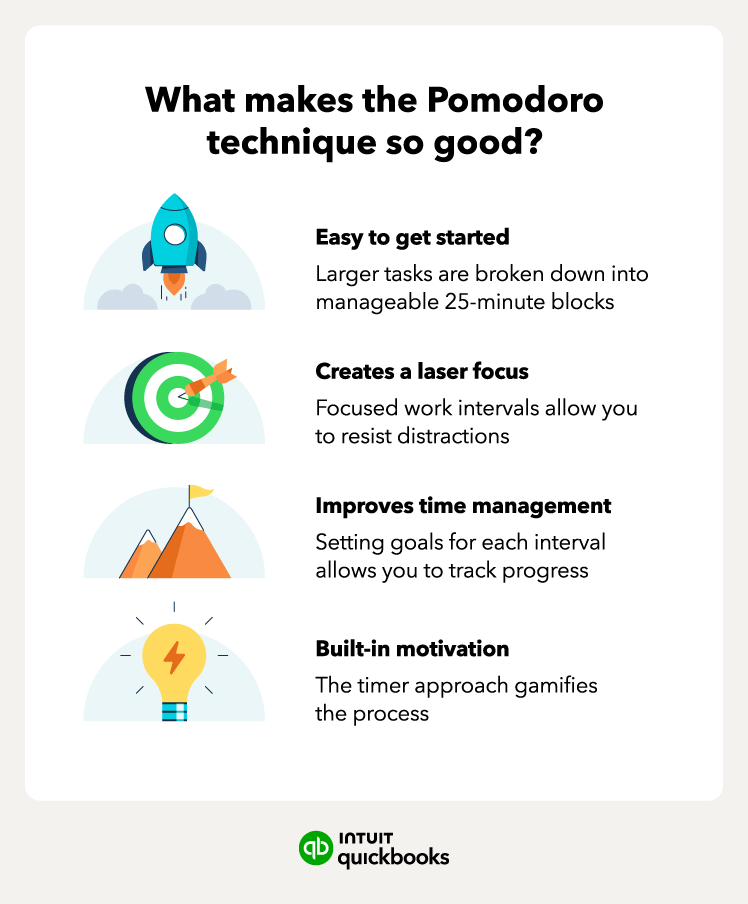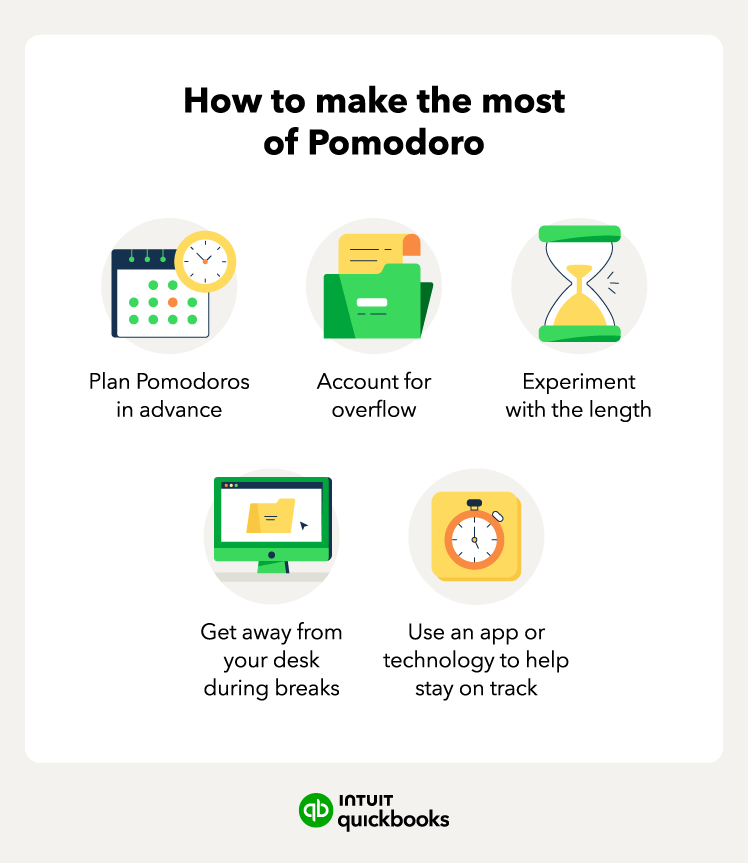Implementing the Pomodoro technique
Simplicity is the biggest strength of using the Pomodoro technique, whether it’s for business owners, employees, or solopreneurs. When you get ready to start using the technique daily, it’s best to:
- Break your major projects or complex tasks into smaller and simpler ones. Take on your most important projects and estimate how many Pomodoros it’ll take. For example, creating next year’s financial budget might take four Pomodoros.
- Group small tasks together. Combine all your small tasks that will take less than a Pomodoro to complete, such as simple appointment-setting or quick-email tasks.
- Don’t break your Pomodoro. Once you start your Pomodoro, don’t break it for tasks like text messages, team chats, or emails.
- Track the effectiveness of your technique. Determine how effective you were at completing a task by visualizing and processing your results. This can help you self-observe and improve your productivity.
In the event of an unavoidable disruption, take your five-minute break and start again. Track interruptions as they occur and reflect on how to avoid them in your next session. If the system seems simple, that’s because it is. The Pomodoro technique is all about getting your mind in the zone to finish your tasks.









 Pomodoro is Italian for “tomato.” It’s a reference to the tomato-shaped timer Francesco Cirillo used to develop the technique while studying in Italy. The Pomodoro timer is sometimes called the “tomato timer.”
Pomodoro is Italian for “tomato.” It’s a reference to the tomato-shaped timer Francesco Cirillo used to develop the technique while studying in Italy. The Pomodoro timer is sometimes called the “tomato timer.”

 Use the Pomodoro for the tedious or undesirable tasks that usually take longer to complete.
Use the Pomodoro for the tedious or undesirable tasks that usually take longer to complete.





